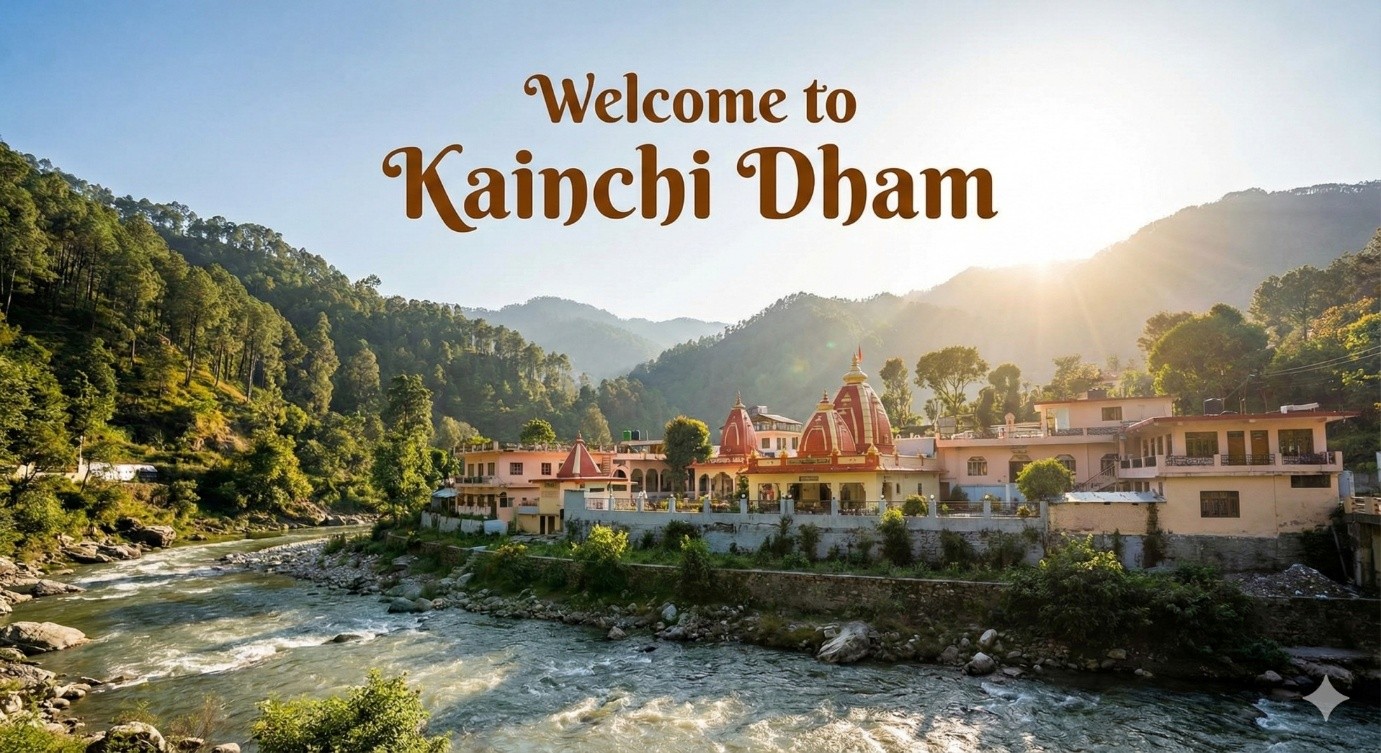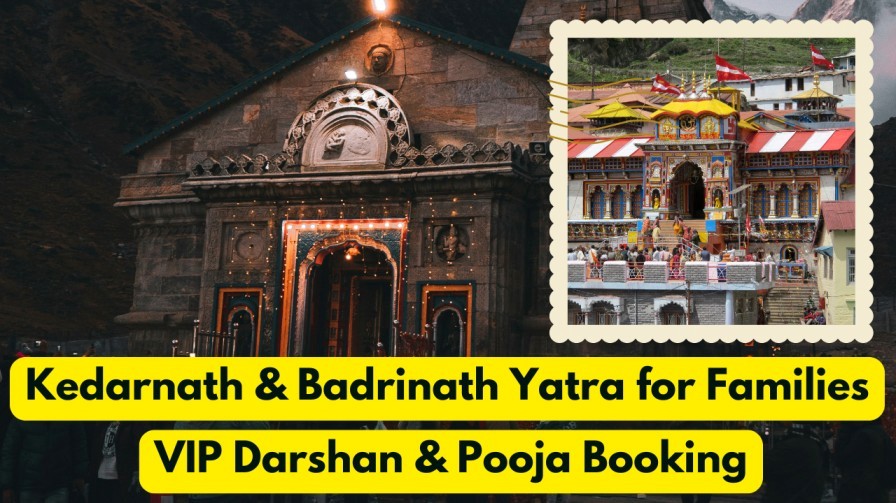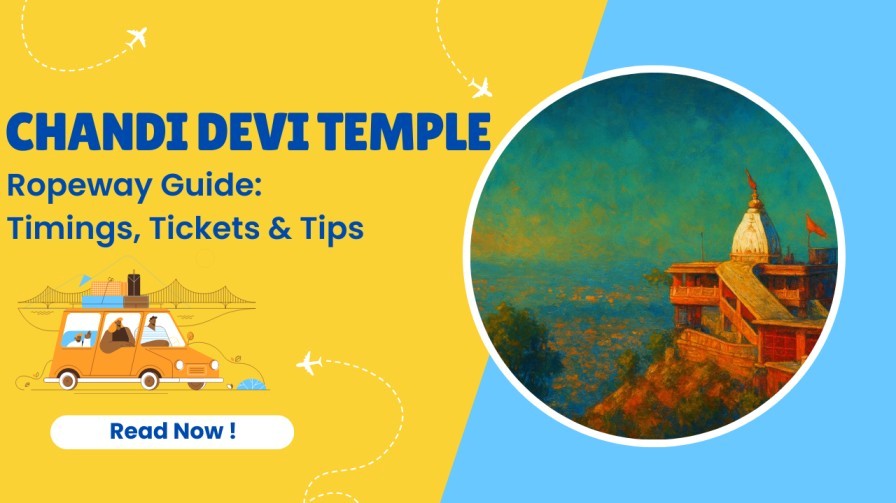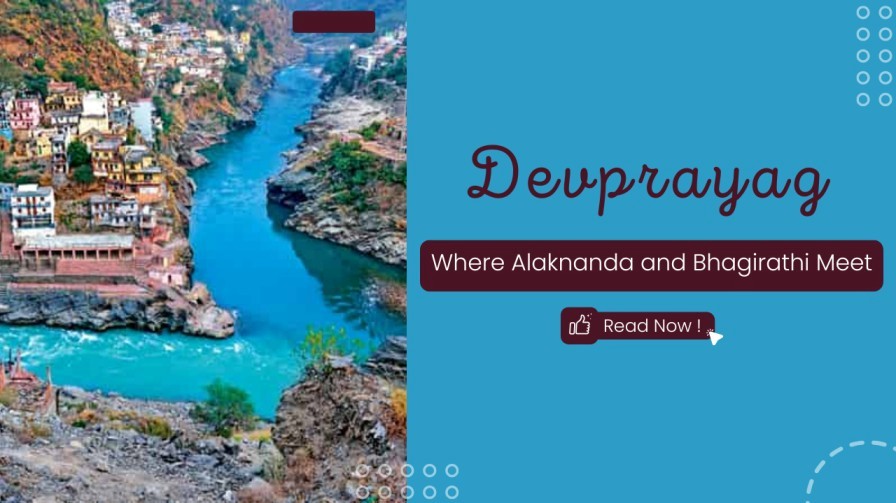By Mayank Upadhya | Local Expert & Founder, Clans Stays Namaste! I am Mayank Upadhya. I was born and raised here in the lap of the Himalayas. For over 15 years, I have worked in the travel industry—first with big companies like MakeMyTrip and Oyo, and now running my own travel company, Clans Stays, right here in Dehradun. I still remember the old days when visiting Surkanda Devi meant a tough, breathless climb. My grandmother used to stop every ten steps, gasping for air, but her faith kept her going. Today, things have changed. With the new Surkanda Devi Temple ropeway, what used to be a 2-hour struggle has become a beautiful 10-minute joyride. If you are planning a trip to Mussoorie or Dhanaulti in 2026, this temple is a must-visit. But, tourists often get confused about the tickets, the timings, and the parking rules. In this guide, I will share everything you need to know—from the Surkanda Devi ropeway ticket price to the secret spot for the best view—written by a local who has been there more than 50 times. Why Surkanda Devi is Special (The Legend) Before we talk about tickets and roads, you must know why you are going there. Surkanda Devi is not just another temple on a hill. It is a Siddh Peeth (a powerful Shaktipeeth). According to our local legends, when Lord Shiva was carrying the burning body of Goddess Sati across the sky in grief, her head (“Sir”) fell on this very mountain. That is why it was originally called “Sir-kanda,” which later became “Surkanda.” It is part of a holy triangle of temples in the Tehri region: Locals believe that if you stand at the top of Surkanda Devi, you can see the peaks of the other two temples. It is a place of immense energy. The Surkanda Devi Temple Ropeway: A Game Changer For years, many seniors could not visit Maa Surkanda because of the steep climb. But now, the Surkanda Devi Temple ropeway has changed everything. The ropeway starts from Kaddukhal, a small town on the Chamba-Mussoorie road. It takes you straight up to the temple area in about 5 to 10 minutes. Surkanda Devi Ropeway Ticket Price (Updated for 2026) Many websites show old prices. As of the latest update for the 2026 season, here are the charges. Category Ticket Price (Round Trip) Ticket Price (One Way) Adults ₹500 approx ₹300 approx Children (Height based) ₹500 approx ₹300 approx Students (with ID) No special discount No special discount Note: The prices can change slightly during peak seasons like May/June (Ganga Dussehra Fair). How to Book Ropeway Tickets? Currently, there is no reliable online booking system. You have to buy tickets at the counter in Kaddukhal. Surkanda Devi Temple Timings & Aarti The temple is open throughout the year, but the timings depend on the sunlight. Daily Darshan Timings Ropeway Operational Timings The ropeway does not run 24 hours. Important Warning: If you stay at the temple for the sunset view (which is magical), you might miss the last trolley down. In that case, you will have to trek down in the dark. Please carry a torch if you plan to stay late. The Trek vs. The Ropeway: Which is Better? I often get asked about the Surkanda Devi trek difficulty. Is it really that hard? The Trek (The Old Way) The Ropeway (The New Way) My Suggestion: If you are with family, take the Surkanda Devi Temple ropeway to go UP, and walk DOWN. Walking down is easy, and you can enjoy the nature trail without getting tired. Surkanda Devi Weather: When to Visit? The temple is located at an altitude of almost 10,000 feet (3,000 meters). The Surkanda Devi weather is very different from Dehradun or Delhi. Summer (April to June) Monsoon (July to August) Winter (November to February) How to Reach Surkanda Devi (Kaddukhal) The base point for the temple is a place called Kaddukhal. Here is how you can reach it. By Air The nearest airport is Jolly Grant Airport (Dehradun). From there, it is a 3-hour drive (85 km). By Train The nearest railway station is Dehradun Station. By Road (The Most Common Way) Most people drive from Mussoorie or Dhanaulti. Driving Tip for 2026: The road from Mussoorie to Dhanaulti (Suwakholi route) is beautiful but narrow and curvy. If you have motion sickness, take medicine before starting. Also, in winter (Dec-Jan), watch out for “Black Ice” on the road near Kaddukhal. It makes the road very slippery. Drive slowly! Mayank’s Insider Tips (Don’t Get Scammed!) As a local, I want to save you from some common hassles at the base camp. 1. The “Free Locker” Scam When you reach Kaddukhal parking, many shopkeepers will wave at you. They will offer “Free Lockers” for your shoes and bags. 2. Dress Warmly Even if it is sunny in Dehradun, it will be windy and cold at the top of Surkanda Devi. Always carry a jacket, even in June. 3. The “Secret” View Most people pray and leave. But if you walk just 50 meters behind the temple, there is an open meadow. Sit there for 10 minutes. The silence is magical. On a clear day, you can spot famous peaks like Nanda Devi and Trishul. Places to Visit Nearby You can easily combine your temple visit with other spots. Here is a mini-itinerary: Conclusion: Should You Visit in 2026? Absolutely. With the Surkanda Devi Temple ropeway, the divine darshan has become accessible to everyone—from your 5-year-old child to your 80-year-old grandmother. It is one of the few places in Uttarakhand where you get spiritual peace, adventure (the ropeway/trek), and Himalayan views all in one place. Just remember to check the Surkanda Devi weather before you leave, and start early to avoid the queue. Need help planning your Uttarakhand trip? At Clans Stays, we specialize in creating customized trips for families who want to see the real Himalayas without the hassle. [Contact Mayank for a Custom
Kainchi Dham Travel Guide: Route, Timings, and Where to Stay
Introduction: The Valley That Pulls You In Namaste, I am Mayank Upadhyay. I have spent my entire life around the winding roads of Uttarakhand. I worked with giants like MakeMyTrip and OYO for years, but my heart was always here, in the mountains. That is why I started Clans Stays—to show you the real Devbhoomi, not just what you see in brochures. Today, I am going to talk about a place that doesn’t need marketing. It calls you. You have probably heard the stories. Steve Jobs came here in the 70s when he was lost. Mark Zuckerberg came here when Facebook was struggling. Julia Roberts is a devotee. They all came looking for one thing: Peace. And they found it at the feet of Neem Karoli Baba (Maharaj-ji). But visiting Kainchi Dham is not like visiting a normal tourist spot. You cannot just show up and expect a VIP darshan. There are rules, specific timings, and a “right way” to plan this trip. In this Kainchi Dham Travel Guide, I will share everything I have learned over decades of traveling this route. Whether you are coming from Delhi, Mumbai, or London, this guide is all you need. What is Kainchi Dham? (And Why the Hype?) Before we talk about how to reach Kainchi Dham, you need to understand the geography. The word “Kainchi” means “Scissors” in Hindi. The ashram is located exactly where two massive hills cut and cross each other like a pair of scissors. This unique geography creates a special energy field. Even if you are not religious, you will feel a sudden silence when you step inside. It was established by Neem Karoli Baba in the 1960s. He is known as the saint of the “Hanuman tradition.” He never gave long lectures or wrote books. He just said: “Love Everyone, Serve Everyone, Feed Everyone.” Today, this small ashram on the Almora-Nainital road has become a global spiritual center. How to Reach Kainchi Dham: The Complete Route Guide This is the most common question I get at Clans Stays: “Mayank, what is the best way to reach?” Let me break it down for you. 1. By Train (The Best Option) If you are coming from Delhi or Lucknow, the train is the most comfortable option. My Personal Recommendation: Take the New Delhi – Kathgodam Shatabdi Express (12040). Another great option is the Ranikhet Express (Overnight). It reaches early morning (around 5:00 AM), which is perfect if you want to attend the morning Aarti. 2. By Road (Delhi to Kainchi Dham Distance) The Delhi to Kainchi Dham distance is approximately 328 km. The roads have improved significantly in the last 5 years. The Route: Delhi ➔ Hapur ➔ Moradabad ➔ Rampur ➔ Rudrapur ➔ Haldwani ➔ Kathgodam ➔ Bhimtal ➔ Bhowali ➔ Kainchi Dham. Time Taken: 7 to 9 hours depending on traffic. Local Tip: Do not rely on Google Maps blindly near Moradabad. Stick to the bypass. Also, once you cross Kathgodam, the hill climb starts. If you have motion sickness, take medicine at Haldwani itself. 3. By Air (Not Recommended for Everyone) The nearest airport is Pantnagar Airport (PGH), about 70 km away. 4. Taxi Fares (2025 Estimates) Once you reach Kathgodam, you will need a taxi. Here are the fair rates so you don’t get cheated: Neem Karoli Baba Ashram Timings & Rules This is the most critical part of this guide. I have seen people travel 1000 km only to find the gates closed. Please read this carefully. Ashram Daily Timings The ashram is not open 24 hours. Aarti Timings (The Magical Hour) If you want to feel the power of the place, attend the Aarti. Note: On Tuesdays, there is a special Hanuman Chalisa recital, and the ashram remains open a bit longer. Important Rules (Don’t Break These!) Where to Stay: Hotels Near Kainchi Dham This is where my experience at OYO and MMT helps. Finding a stay right next to the ashram is tricky because there are very few options. Option 1: Staying Inside the Ashram Option 2: Bhowali (Best for Convenience) Bhowali is a small town just 8 km from Kainchi Dham. It is the best place to stay. Option 3: Nainital (Best for Tourists) If you are with family and want to do boating and shopping too, stay in Nainital. Option 4: Ramgarh (For Luxury & Peace) If you want a luxury experience, head to Ramgarh (Mukteshwar road). Food Guide: What to Eat? You are in the hills, so don’t look for Dominos. There are small dhabas right outside the Ashram gate. They serve simple, clean vegetarian food (Rice, Dal, Roti) at very cheap rates. Best Time to Visit Kainchi Dham The Best time to visit Kainchi Dham depends on what you are looking for. March to June (Peak Season) July to September (Monsoon) October to February (Winter) A 2-Day Itinerary by Clans Stays If you are planning a weekend trip from Delhi, here is how I would design it for you. Day 1: Arrival & Evening Aarti Day 2: Morning Peace & Departure Nearby Attractions (Bonus) Since you have come this far, why stop at Kainchi? Conclusion: A Note from Mayank I have been in the travel industry for a long time. I have seen 7-star hotels in Dubai and luxury resorts in the Maldives. But the peace you get sitting on that concrete bench in Kainchi Dham? You can’t buy that. It is a place that cleans you from the inside. My suggestion? Don’t just go there to click a selfie outside the gate. Go there to sit. To think. To disconnect. If you need help planning this trip—whether you want a budget homestay or a luxury car for your parents—Clans Stays is here to help. We are locals. We know the roads, the drivers, and the hidden gems. Jai Maharaj Ji! Frequently Asked Questions (FAQ Schema) 1. How do I book a room inside Kainchi Dham Ashram? You cannot book online. You must send a letter to
Kedarnath & Badrinath Yatra for Families: VIP Darshan & Pooja Booking
Namaste! I am the owner of Clans Stays. For the last 15 years, I have lived and worked right here in the mountains of Uttarakhand. I have seen thousands of pilgrims come for the Yatra. I have seen the happy tears when people see the temple. But, I have also seen the pain. I have seen old mothers crying because their legs hurt from standing in line for 6 hours. I have seen fathers worried because the crowd is too big for their small children. The Yatra is tough. The air is thin, and the weather changes very fast. Standing in a line for hours is not easy for everyone. That is why we created the Kedarnath Badrinath VIP Darshan Package. This guide will tell you how to plan a safe family trip to Kedarnath and Badrinath without the stress. Why You Need a VIP Package for Your Family When you come to the Himalayas, you want peace. You want to pray to Lord Shiva and Lord Badri Vishal. You do not want to spend your whole day pushing through a crowd. In May and June, the wait time for Darshan can be 10 to 12 hours. Imagine standing that long in the cold. It is very hard for kids and seniors. With our package, you get “VIP Darshan”. This means you use a special gate. You save time. You get to the temple fresh and happy, not tired and angry. What is Included in the Package? Many people ask, “What exactly do I get?” Here is a simple table to show you: Service Regular Yatra Our VIP Package Temple Entry Stand in line (4-10 hours) Fast Entry (30 mins – 1 hour) Pooja Hard to book on the spot Kedarnath Package with Pooja Booking included Stay Hotels might be full Best hotels confirmed Transport finding a taxi is hard Do Dham Yatra Taxi Service included Guide No guide Local support 24/7 The Magic of Pooja Booking Visiting the temple is one thing. But sitting inside for a special Pooja is a different feeling. It is magical. However, booking a Pooja is very hard. The slots get full months in advance. Many travel agents promise it but fail to give it. Because I am a local person, I know the process inside out. When you book do dham yatra with us, we handle the Pooja receipts. Whether it is the morning Abhishek or the evening Aarti, we try our best to get you the slot you want. This makes your Do Dham Yatra for Families truly special. Ground Reality: Things No One Tells You Since I have been here for 15 years, let me tell you the truth about the Yatra. 5 Nights 6 Days Do Dham Yatra Itinerary (From Haridwar) This is the best plan for a family. We do not rush. We give you time to rest. Day 1: Haridwar to Guptkashi Day 2: Guptkashi to Kedarnath (The Big Day) Day 3: Kedarnath to Guptkashi Day 4: Guptkashi to Badrinath Day 5: Badrinath Darshan and Return to Rudraprayag Day 6: Rudraprayag to Haridwar Understanding the Costs Customers often ask about the Do Dham Yatra Package Price. The price changes based on a few things: We offer transparent pricing. No hidden costs. When you book with Clans Stays, we tell you the final price upfront. Why Choose a Local Agent like Clans Stays? I run this agency, but I am also a devotee. I know which hotel has clean sheets. I know which driver drives safely on these roads. Big online companies sit in offices in Delhi or Mumbai. They do not know if a road is blocked today. We know. We are here. We provide the best Do Dham Yatra Taxi Service because our drivers are locals who know every turn of the mountain. Frequently Asked Questions (FAQs) Q1: Is the VIP Darshan really faster? A: Yes. In peak season, the general line takes 10 hours. With our VIP pass, it usually takes less than 1 hour. It is best for elders. Q2: Can I get a refund if I cancel my package? A: Cancellation rules depend on how close to the date you cancel. Since helicopter and Pooja slots are non-refundable by the government, that part cannot be refunded. We will explain all rules before you book. Q3: Is this package good for small kids? A: Yes. Kids get tired in lines. The Do Dham Yatra for Families package makes it quick so kids stay happy. We also choose hotels that are comfortable for children. Q4: How do I book the Pooja? A: You don’t need to worry. We handle the Kedarnath Package with Pooja Booking. You just give us your names and details, and we do the rest. Q5: What is the best time for this trip? A: May and June are very busy but good for school holidays. September and October are very pleasant, less crowded, and cheaper. Q6: Do I need a medical checkup? A: It is good to visit your doctor before coming, especially for heart or breathing issues. Kedarnath is at a high height and oxygen is low. Q7: Can I customize the itinerary? A: Yes! If you want to stay one more day in the mountains, just tell us. We can change the plan for you. Q8: What happens if the weather is bad? A: Safety is first. If the weather is bad and helicopters stop, we help you find other options or wait. Being locals, we know the best places to wait safely. Q9: Does the package price include food? A: Usually, breakfast and dinner at the hotel are included. Lunch is not included because you will be on the road or at the temple during lunch time. Ready to Plan? Don’t let the fear of crowds stop you. Your parents deserve to see Kedarnath. Your children deserve to know our culture. With our Kedarnath Badrinath VIP Darshan Package, it is easy. Call us today to book do dham
Trekking Tungnath with Family — Is It Safe for Kids & Elders?
If you are planning a Tungnath trek with family, you are already making a beautiful choice. Tungnath is one of those places where children, parents, and even grandparents can enjoy the same trail together. I have been guiding groups in this region for more than 15 years, and I can say this very confidently — yes, Tungnath is safe for kids and elders, if you plan it properly and choose the right season, pace, and support. In this blog, I’ll explain the Chopta Tungnath trek distance, difficulty, safety for children and senior citizens, how to reach Chopta, package ideas, and practical tips from a local point of view. Why Tungnath is a Great Choice for Families Tungnath is not a very long or risky trek. It starts from Chopta, a small and peaceful hill station in Uttarakhand, often called the Mini Switzerland of India. Here’s why this trek is family-friendly: So, if you are looking for a chopta tungnath trek that parents, kids, and elders can all enjoy together, this is one of the best options in Uttarakhand. Chopta to Tungnath & Chandrashila – Distance, Time and Difficulty Let’s break down the chopta to tungnath trek distance and time in a simple table so you can plan better for your family. Trek Distance & Time Overview Section Distance (One Way) Average Time (One Way) Approx Altitude Difficulty Level Chopta to Tungnath Temple 3.5–4 km 2–3 hours 3,680 m (12,073 ft) Easy to Moderate Tungnath to Chandrashila 1.5 km 1–2 hours 4,000 m (12,960 ft approx.) Moderate Total (Chopta–Tungnath–Chandrashila–Chopta) ~10 km (round trip) 5–7 hours (full day) — Moderate For most families: If you are travelling with small children or older parents, you can plan only Chopta to Tungnath and still enjoy a beautiful and meaningful experience. Is the Tungnath Trek Safe for Kids? Yes, Tungnath is safe for kids, if you plan slowly and don’t rush them. From my experience: Things to Keep in Mind for Kids Kids actually enjoy this trek a lot because: Is the Tungnath Trek Safe for Elders and Senior Citizens? Again, the answer is yes, if the elder person is in reasonable health and you do not rush. In my 15 years of experience, I have seen many people aged 60–75 years complete the chopta tungnath trek happily. Important Points for Elders If elders find walking very difficult, they can consider hiring a pony or palanquin from Chopta (available in season), especially for the steeper sections. Best Time for a Tungnath Trek with Family For families, choosing the right season is very important for safety and comfort. Ideal Seasons Seasons to Avoid with Kids & Elders How to Reach Chopta (Route Overview) Now let’s talk about how to reach Chopta, because that is the starting point of the trek. Most families travel from Delhi, Haridwar, Rishikesh, or Dehradun. By Road This is the most common way. Typical route from Rishikesh / Haridwar:Rishikesh → Devprayag → Srinagar → Rudraprayag → Agastmuni → Ukhimath → Chopta By Train By Air For a family trip, I strongly suggest: Chopta Tungnath Trek Package – What Families Should Expect Many visitors prefer a chopta tungnath trek package instead of managing everything on their own. This is easier for families. Here is a simple idea of what such a package often includes: Typical Inclusions in a Chopta Tour Package Approx Package Types (Per Person) Package Type Inclusions Good For Budget Shared vehicle, basic stay, simple meals, guide Students, budget families Standard Semi-private vehicle, better rooms, good food, guide Most families Premium Private cab, best available rooms/camps, more comfort Elderly parents, couples, small private groups While choosing a chopta tour package, check clearly: Fitness & Preparation Tips for Families You don’t need to be an athlete, but basic fitness helps a lot. For Everyone For Kids For Elders Essential Things to Carry for Tungnath Trek Here is a ready checklist you can use. Clothing Footwear Other Essentials Safety Tips on the Trail Over the years, I have seen that small precautions make a big difference. Remember, in the mountains, reaching safely is more important than reaching quickly. Making the Trek Fun for the Whole Family Tungnath is not only about reaching a temple or summit. It is about the memories you create on the way. Here are a few simple ideas: When you treat the journey as a family picnic with a spiritual purpose, everyone enjoys it more. FAQs – Tungnath Trek with Family 1. Is the Tungnath trek safe for small kids?Yes, the Tungnath trek is safe for kids above 7–8 years if you walk slowly, take regular breaks, and choose the right season. 2. Can senior citizens do the Chopta Tungnath trek?Yes, many senior citizens complete the trek every year. They should have basic fitness, carry medicines, use trekking poles, and start early. If needed, they can use pony services on steep parts. 3. What is the Chopta to Tungnath trek time for families?Most families take around 2.5 to 3.5 hours to reach Tungnath from Chopta, depending on fitness, age, and break time. 4. What is the Chopta to Chandrashila trek distance and time?From Tungnath to Chandrashila, the distance is about 1.5 km one way, and it takes 1–2 hours more. It is better suited for teens and adults than very young kids or elders. 5. Which is the best month for a Tungnath trek with family?For most families, April–June and September–October are the best months, with pleasant weather and safer trail conditions. Final Thoughts – Should You Do the Tungnath Trek with Family? If you are still wondering whether a Tungnath trek with family is a good idea, my answer as a local and a trek leader is: absolutely yes. With the right planning, pace, and season, it becomes one of the most beautiful and safe Himalayan experiences you can share with your loved ones — full of nature, devotion, and togetherness. If you are planning your own chopta tungnath trek package or want a customized chopta tour
Chandi Devi Temple & Ropeway Guide: Timings, Tickets & Tips
Built in 1929 by King Suchat Singh of Kashmir, the temple is believed to be over 1,200 years old, with its idol established by Adi Shankaracharya. Dedicated to Goddess Chandi, it is one of the most important Shaktipeeths in North India. What Makes Chandi Devi Temple Special Chandi Devi Temple Timings Chandi Devi Ropeway Ticket Price Tips By Ropeway (Udan Khatola) – The Easiest & Fastest Option The Chandi Devi Ropeway is the most popular way to reach the temple. Where to Board: Why Choose the Ropeway: By Trek (Traditional Route) If you prefer walking, there is a 3 km uphill trek starting from Chandighat. Trek Details By Road (To Ropeway/Trek Starting Point) You cannot drive all the way to the temple, but you can drive to the ropeway base or trek start point. From Major Locations: Nearby parking is available at Chandi Chowk for those traveling by private vehicle. Using Public Transport This is the most budget-friendly option for solo travellers or backpackers. Travel Tips: Your Chandi Devi Temple Travel Guide Best Time to Visit Avoid Peak Hours What to Carry Senior Citizens & Kids Photography Safety & Guidelines Why Choose the Ropeway? Nearby Attractions & Combo Visit Nearby Attractions around Chandi Devi Temple Chandi & Mansa Devi Combo Visit FAQs Clan Stays Travel Services: Why They’re the Best Choice Traveling is easy and stress-free with Clan Stays, your trusted travel partner. They offer customized packages, including stays, tours, and transportation, tailored to your needs. With affordable pricing and expert guidance at every step, your journey is smooth and hassle-free. Trusted by countless travellers, Clan Stays ensures memorable and worry-free travel experiences.
Mansa Devi Temple & Ropeway: Timings, Ticket Price, and Travel Tips
Mansa Devi Temple is one of Haridwar’s most revered Shakti temples, dedicated to Goddess Mansa Devi. It sits atop Bilwa Parvat and offers beautiful views of the Ganga and the city. Devotees believe the goddess fulfils wishes, and many tie threads in the temple as a symbol of their prayers. The temple can be reached by a short trek or the popular Mansa Devi Ropeway. Its spiritual atmosphere and scenic location make it a must-visit spot for pilgrims and travellers. Mansa Devi Temple Timings Mansa Devi Ropeway Information Ropeway Name & Distance Ropeway Timings Mansa Devi Ropeway Ticket Price How to Reach Mansa Devi Temple By Ropeway On Foot (Trek) By Local Transport Best Time to Visit Mansa Devi Temple Travel Tips for Mansa Devi Temple & Ropeway Explore places Nearby Mansa Devi Temple There are several popular attractions close to Mansa Devi Temple that you can easily explore in the same day. These spots offer a mix of spirituality, culture, and scenic beauty, making your Haridwar trip more memorable. Here are the best places to visit nearby: Har Ki Pauri One of the most sacred ghats in India, famous for the evening Ganga Aarti and peaceful riverside atmosphere. It is located about 2 km from Mansa Devi Temple and can be reached with a short walk or quick rickshaw ride. Chandi Devi Temple Located on Neel Parvat, this temple is another important Shakti Peeth in Haridwar. It sits around 4 km from Mansa Devi Temple, and you can reach it by trekking or taking the Chandi Devi Ropeway. Many pilgrims visit both temples on the same day. Maya Devi Temple An ancient temple dedicated to Goddess Maya, considered one of Haridwar’s three Siddh Peeths. It is centrally located about 1.5 km from Mansa Devi Temple, making it easy to combine during the same visit. Daksha Mahadev Temple Located in Kankhal, this temple is dedicated to Lord Shiva and associated with the legend of Sati and King Daksha. It is roughly 5 km from Mansa Devi Temple and offers a peaceful spot just a short drive from the city centre. Bharat Mata Mandir A unique multi-storey temple showcasing India’s culture, heritage, and freedom fighters. It is situated around 3 km from Mansa Devi Temple, making it a convenient and family-friendly stop. FAQs Q1: What are the Mansa Devi Temple darshan timing?A1: The darshan timing is roughly 6:30 AM–7:00 PM from April to October, and 8:30 AM–6:00 PM during November–March. Q2: What is the Mansa Devi Ropeway ticket price?A2: The ropeway price for Mansa Devi & Chandi Devi combo is about ₹439 for adults and ₹225 for children (90–110 cm height). Q3: How long does the Mansa Devi Ropeway ride take?A3: It takes around 5–7 minutes one way, covering about 540 m in length. Q4: Is there an option to walk up to Mansa Devi Temple?A4: Yes, you can trek about 1.5 km uphill, climbing approximately 780 steps to reach the temple. Q5: Can I book Mansa Devi Ropeway tickets online?A5: Yes. Online booking is available (e.g., via udan khatola operator), which helps avoid long lines during busy times. Why You Can Rely on Clan Stays for Hassle-Free Travel You can rely on Clan Stays for hassle-free travel because they take care of everything from planning to execution. They arrange your stay, transport, and sightseeing so you don’t have to stress about any details. Their team is helpful, quick to respond, and always ready to support you during your trip. With honest pricing and reliable services, they make travel smooth and comfortable. Clan Stays ensures you enjoy your journey without worries, making them a trusted choice for every traveller.
Triyuginarayan Temple Wedding Guide – Procedure, Cost & How to Book
A Triyuginarayan Temple wedding is one of the most divine experiences for couples who want a spiritual, simple, and meaningful ceremony. This sacred temple in Uttarakhand is believed to be the place where Lord Shiva and Goddess Parvati got married, making it the most auspicious location for Hindu weddings. Today, thousands of couples choose Triyuginarayan destination weddings because the atmosphere, rituals, and natural beauty of the Himalayas make the ceremony unforgettable. In this guide, you will learn: About Triyuginarayan Temple (The Divine Wedding Site) Triyuginarayan Temple is located near Sonprayag, close to the route to Kedarnath. It is one of India’s most sacred marriage destinations because: This makes it a perfect wedding destination for couples who want a spiritual, nature-filled setting. Why Get Married at Triyuginarayan Temple? How to Reach Triyuginarayan Temple Location Distance Travel Time Sonprayag 13 km 30–40 mins Kedarnath Base (Gaurikund) 15 km — Rudraprayag 75 km 2.5 hrs Rishikesh 190 km 5–6 hrs Dehradun 240 km 7–8 hrs You can reach here by taxi from Rishikesh, Haridwar or Dehradun. Triyuginarayan Temple Marriage Procedure A Triyuginarayan Temple wedding follows a simple traditional Hindu ritual. Here is the complete process: 1. Select Your Wedding Date The temple remains accessible from March to November. Avoid monsoon and heavy-snow months. 2. Contact Temple Authorities or Travel Agency For smooth arrangements, it is advisable to contact a professional Uttarakhand wedding planner or a trusted travel agency.They handle: 3. Complete Triyuginarayan Marriage Registration You need to carry: You receive a certificate from the temple. Later, you can legally register your marriage in your hometown. 4. Rituals Conducted on Wedding Day This makes your ceremony deeply spiritual and traditional. 5. Receive Marriage Certificate from Temple The temple priest provides a traditional certificate with official seals. Triyuginarayan Wedding Cost (Updated 2025–2027) Wedding prices vary based on rituals, season, number of guests, decoration level, meals, accommodation, and photography. Here is the UPDATED & REALISTIC cost structure, based on verified sources and your input: 1. Basic Wedding Cost (Couple Only) ₹35,000 – ₹60,000 Includes: 2. Standard Wedding (4–10 Guests) ₹70,000 – ₹1,50,000 Includes: 3. Premium Triyuginarayan Destination Wedding (10–25 Guests) ₹2,00,000 – ₹4,50,000+ This package matches your original blog pricing and is used by many agencies. Includes: This makes your earlier ₹2,30,000 price valid as a premium mid-range destination wedding package. Triyuginarayan Wedding Cost Comparison Table Wedding Type Guests Price Range Best For Basic 2–4 ₹35,000–₹60,000 Simple spiritual ceremony Standard 4–10 ₹70,000–₹1,50,000 Small family weddings Premium 10–25 ₹2,00,000–₹4,50,000+ Destination-style setup Triyuginarayan Temple Wedding Package (Example) A typical package includes: Add-ons (Chargeable): How to Book a Triyuginarayan Temple Wedding Here’s the simplest Triyuginarayan wedding booking guide: Step 1: Select preferred date Step 2: Contact a verified planner or agent Step 3: Share documents for registration Step 4: Choose decor + stay + photography options Step 5: Pay advance to confirm booking Step 6: Arrive one day before ceremony Booking early is recommended during: Best Time for a Triyuginarayan Temple Wedding Avoid July–August (monsoon) and heavy-snow winters. Nearby Places You Can Combine With Wedding Frequently Asked Questions (FAQ Schema) 1. What is the cost of a Triyuginarayan Temple wedding? It begins at ₹35,000 for a basic ceremony and can go up to ₹4,50,000+ for premium destination-style weddings with décor, food, photography and guest stay. 2. How to get married at Triyuginarayan Temple? Select a date, contact a planner, submit ID proofs, book a priest, and perform rituals near the eternal flame. 3. Is legal marriage registration included? The temple gives a certificate. Legal registration must be done later at your home city registrar office. 4. Can foreigners marry at Triyuginarayan Temple? Yes, with passport copies and valid visa details. 5. How many guests can attend the wedding? Most weddings host 2–25 guests, depending on the package. Conclusion A Triyuginarayan Temple wedding is a divine and meaningful way to start your married life. With its spiritual history, sacred flame, and serene Himalayan surroundings, it offers an unforgettable experience. Whether you want a simple traditional ceremony or a premium destination-style wedding, this guide gives you everything you need—costs, procedure, booking details, and tips.
Karnaprayag and Vishnuprayag Travel Guide
Karnaprayag sits at the holy merging point of the Alaknanda and Pindar rivers, revered as a powerful Karnaprayag holy confluence. Legends say this is where Karna, the great warrior of the Mahabharata, meditated and received divine Armor from Lord Surya. Spiritual Importance Recognized as a key Karnaprayag pilgrimage site, the area attracts visitors seeking purification and peace. The riverside ghats offer a calm atmosphere ideal for meditation. Places to Visit in Karnaprayag Karna Temple The Karna Temple is one of the most important spiritual sites in Karnaprayag, located about 1 km from the main town center. Dedicated to Karna from the Mahabharata, this temple attracts devotees seeking blessings and inner peace. Uma Devi Temple Situated around 0.5 km from the confluence area, the Uma Devi Temple offers a serene and calm ambience perfect for meditation. Its peaceful surroundings make it a popular stop for pilgrims visiting the Karnaprayag holy confluence. Karnaprayag Holy Confluence Viewpoint The stunning confluence of the Alaknanda and Pindar rivers lies right in the heart of Karnaprayag, roughly 0.3 km from the main market. This scenic viewpoint is ideal for photography, quiet reflection, and experiencing the true beauty of Karnaprayag tourism. Adi Badri (Nearby) Adi Badri is located approximately 19 km from Karnaprayag and is part of the Sapta Badri temple group. The temple complex features ancient stone architecture and holds immense religious and historical importance. Nauti Village (Nearby) Nauti Village lies nearly 12 km from Karnaprayag and is known for its cultural significance, especially the Nanda Devi Raj Jat Yatra. Visitors come here to explore traditional Garhwali culture and scenic mountain landscapes. Gauchar Plains (Nearby) Located about 15 km from Karnaprayag, Gauchar is famous for its wide plains surrounded by mountains. It’s a great spot for photography, peaceful walks, and attending local fairs hosted throughout the year. Best Time to Visit Karnaprayag and Vishnuprayag The best time to visit Karnaprayag and Vishnuprayag is from March to June and October to November. These months offer pleasant weather, clear mountain views, and safe travel conditions—ideal for sightseeing, pilgrimages, and photography. Spring & Summer (March–June) Monsoon (July–September) Autumn (October–November) Winter (December–February) How to Reach Karnaprayag Reaching Karnaprayag is convenient as it lies on the main highway connecting Rishikesh to Badrinath. Whether you’re coming for pilgrimage, sightseeing, or part of your Karnaprayag travel guide, below are the best ways to access this sacred town. By Road Karnaprayag is well connected by road to major cities in Uttarakhand. Regular buses and shared taxis are available from Rishikesh, Haridwar, and Dehradun. The drive is scenic and follows the Alaknanda River almost throughout the route. By Train Karnaprayag does not have its own railway station. From both stations, you can hire a taxi or board a state transport bus toward Rudraprayag and then continue to Karnaprayag. Note: The Rishikesh–Karnaprayag rail project is under construction. Once completed, it will make travel much faster and more comfortable. By Air From the airport, you can take a taxi to Rishikesh and then continue toward Karnaprayag. Travel Tips for Karnaprayag and Vishnuprayag Karnaprayag–Vishnuprayag Itinerary (2–3 Days) Day 1: Rishikesh → Karnaprayag Day 2: Karnaprayag → Joshimath → Vishnuprayag Day 3: Option to Extend FAQs 1. What is special about Karnaprayag? Karnaprayag is one of the Panch Prayags where the Alaknanda meets the Pindar River. It is known for Karna Temple, peaceful river views, and scenic mountain landscapes. 2. Why is Vishnuprayag famous? Vishnuprayag is revered for the meeting of the Alaknanda and Dhauliganga rivers. It is associated with Narada Muni’s meditation and Lord Vishnu’s blessings. 3. How far is Karnaprayag from Vishnuprayag? The distance is approximately 82 km via NH-7, taking around 2.5 to 3 hours by road. 4. Can I visit both prayags in one day? Yes, you can, but a 2–3-day trip is recommended for comfortable sightseeing and local exploration. 5. Is it safe to travel during monsoon? Travel is possible but not ideal due to frequent landslides. Post-monsoon is safer and more enjoyable. Why Booking Through Clan Stays Gives You More Value? Booking through Clan Stays gives you great value because they plan your trip carefully and save you time. You get access to unique stays and local experiences that are hard to find on your own. They ensure safe and reliable travel, with support at every step. Their packages are cost-effective, so you get more for your money. With Clan Stays, your trip becomes easier, stress-free, and truly enjoyable.
Devprayag – Where Alaknanda and Bhagirathi Meet
Nestled in the serene lap of the Himalayas lies Devprayag – Where Alaknanda and Bhagirathi Meet, marking the origin of the Ganga River. This sacred confluence, known as the Devprayag Sangam, is not only a geographical marvel but also a deeply spiritual destination that attracts thousands of pilgrims and travellers each year. From mythological legends to mesmerizing natural beauty, Devprayag stands as a testament to India’s divine heritage. The Confluence of Alaknanda and Bhagirathi Rivers At Devprayag, two mighty Himalayan rivers — Alaknanda and Bhagirathi — merge gracefully to form the holy Ganga River. The merging of these rivers at Devprayag symbolizes the union of knowledge and spirituality, creating one of India’s most sacred water bodies — the Ganga. Spiritual Significance of Devprayag The spiritual significance of Devprayag is rooted in ancient Hindu scriptures and mythology. It is believed that Lord Rama and King Dasharatha performed penance here to wash away their sins. The place is said to be blessed by Lord Vishnu, making it one of the holiest pilgrimage sites in India. Pilgrims believe that taking a dip in the Devprayag Sangam cleanses the soul of past karma and brings spiritual enlightenment. The Raghunathji Temple, dedicated to Lord Rama, stands as the town’s spiritual heart. Devprayag’s spiritual experience: Pilgrimage to Devprayag Uttarakhand Devprayag holds immense importance for devotees undertaking the Char Dham Yatra. It serves as a vital stop between Rishikesh and Badrinath, offering both spiritual solace and scenic beauty. Best Time to Visit Devprayag The best time to visit Devprayag depends on what you want to experience — spiritual calm, pleasant weather, or scenic river views. Summer (March to June) Monsoon (July to September) Winter (October to February) Devprayag Tourism: A Blend of Nature and Divinity Apart from its religious aura, Devprayag tourism offers a peaceful retreat for travellers seeking nature, adventure, and culture.You can explore: Nearby Attractions Around Devprayag If you’re planning a trip to Devprayag – Where Alaknanda and Bhagirathi Meet, you’ll find plenty of fascinating destinations nearby that beautifully combine spirituality, adventure, and Himalayan charm. These make your Devprayag tourism experience even more memorable. Raghunathji Temple (0 km) Located right in Devprayag town, this ancient temple is dedicated to Lord Rama. Its intricate carvings and peaceful ambiance make it the spiritual heart of the town. Rishikesh (70 km) Known as the Yoga Capital of the World, Rishikesh offers yoga retreats, river rafting, and the iconic Lakshman Jhula. It’s an ideal stop for spiritual seekers and adventure lovers alike. Srinagar Garhwal (35 km) A scenic town on the banks of the Alaknanda River, Srinagar is known for its serene ghats and the Kamleshwar Mahadev Temple. It’s also a great base for exploring the Garhwal region. Tehri Dam (60 km) One of Asia’s tallest dams, Tehri Dam is a modern engineering marvel. Visitors can enjoy water sports like jet skiing, boating, and parasailing at Tehri Lake. Chandrabadani Temple (35 km) Perched on a hilltop at 2,277 meters, this Shakti Peeth is believed to be the spot where parts of Goddess Sati fell. The panoramic view of the Garhwal Himalayas is breath-taking. Kaudiyala (50 km) A popular river-rafting site between Devprayag and Rishikesh, Kaudiyala is perfect for thrill-seekers. The Ganga’s rapids here range from Grade II to IV, offering an adrenaline-pumping experience. Origin of the Ganga River: A Divine Legacy The origin of the Ganga River at Devprayag is both a natural and spiritual phenomenon. According to mythology, the Ganga descended from heaven to cleanse the earth of sins, and it is here, at Devprayag, that her earthly journey truly begins. The sight of the turquoise Alaknanda merging with the greenish Bhagirathi is awe-inspiring a visual symbol of purity, devotion, and divine unity. Why Visit Devprayag Devprayag – Where Alaknanda and Bhagirathi Meet is a peaceful and sacred place in Uttarakhand. It’s known as the origin of the Ganga River, making it one of the most important pilgrimage sites in India. Here’s why you should visit: Whether you come for faith, peace, or nature, Devprayag Uttarakhand offers a truly divine experience. FAQs about Devprayag 1. What is special about Devprayag?Devprayag is the sacred confluence where the Alaknanda and Bhagirathi rivers meet to form the Ganga River, a major pilgrimage site in Uttarakhand. 2. Which rivers meet at Devprayag?The Alaknanda River from Badrinath and the Bhagirathi River from Gaumukh merge at Devprayag. 3. What is the best time to visit Devprayag?October to April offers the best weather for sightseeing and spiritual activities. 4. How can I reach Devprayag from Rishikesh?You can reach Devprayag by road (around 70 km), with regular taxis and buses available. 5. Is Devprayag part of the Char Dham Yatra?Yes, it is often included as a sacred stop on the Char Dham pilgrimage route in Uttarakhand. Visiting Devprayag? Here’s Why Clan Stays Is Your Best Choice Visiting Devprayag – Where Alaknanda and Bhagirathi Meet is a spiritually enriching experience, and having the right stay makes all the difference. Clan Stays offers cozy, comfortable accommodations close to the sacred Devprayag Sangam, perfect for pilgrims and travellers alike. Guests can enjoy stunning river views, warm local hospitality, and easy access to nearby temples and attractions. With Clan Stays, your Devprayag trip becomes both peaceful and memorable.
Mukteshwar – Peaceful Mountain Escape
Tucked away in the Kumaon region of Uttarakhand, Mukteshwar – Peaceful Mountain Escape is the perfect antidote to the chaos of city life. This quaint hill station, perched at 2,285 meters above sea level, offers mesmerizing Himalayan views, apple orchards, dense pine forests, and a soothing aura of calm. If you’re seeking an offbeat mountain destination in India, Mukteshwar is your ideal retreat. Why Visit Mukteshwar? Mukteshwar is more than just a scenic hill town — it’s a peaceful getaway in Uttarakhand where nature, spirituality, and adventure coexist beautifully. Named after Lord Shiva’s temple “Mukteshwar Dham,” this destination is known for its serene atmosphere and untouched natural beauty. Things to Do in Mukteshwar Whether you’re a nature lover, adventure seeker, or peace chaser, Mukteshwar has something for everyone. Visit Mukteshwar Temple Perched atop a hill, the 350-year-old Mukteshwar Dham offers breath-taking views of the Himalayas and holds deep spiritual significance. Explore Chauli ki Jali A short trek from the temple leads to Chauli ki Jali, a cliff known for its spectacular sunset views and adventure activities like rappelling and rock climbing. Walk Through Orchards & Forests Take long walks through apple orchards and pine forests — an essential part of any Mukteshwar nature retreat experience. Adventure & Nature Trails Try paragliding, trekking to nearby villages like Sitla and Peora, or birdwatching in the Mukteshwar forest reserve. Indulge in Local Flavours Savor Kumaoni dishes such as Aloo ke Gutke, Bhatt ki Churkani, and Bhaang ki Chutney at local cafes. Seasonal Weather Overview – Mukteshwar Hill Station The weather in Mukteshwar hill station stays pleasant throughout the year, making it one of the most peaceful getaways in Uttarakhand. Each season brings its own charm — from misty monsoons to snowy winters. Summer in Mukteshwar (March – June) Monsoon in Mukteshwar (July – September) Autumn in Mukteshwar (October – November) Winter in Mukteshwar (December – February) Quick Summary Table Season Temperature Travel Highlights Summer (Mar–Jun) 15°C–25°C Adventure & sightseeing Monsoon (Jul–Sep) 18°C–22°C Greenery & solitude Autumn (Oct–Nov) 10°C–20°C Clear mountain views Winter (Dec–Feb) 2°C–15°C Snow & cozy retreats Weekend Escape to Mukteshwar- Day-Wise-Plan Looking for a quick peaceful getaway in Uttarakhand? Mukteshwar is an ideal offbeat mountain destination in India, perfect for a 2-night, 3-day trip filled with nature, calm, and adventure. Day 1 – Arrival & Sunset Views Day 2 – Explore Mukteshwar Day 3 – Sunrise & Departure Quick Tips: How to Reach Mukteshwar Getting to Mukteshwar hill station is easy, whether you’re coming from Delhi, Nainital, or nearby Uttarakhand towns. Here’s a quick Mukteshwar travel guide: By Road By Train By Air FAQs about Mukteshwar – Peaceful Mountain Escape Q1. What is the best time to visit Mukteshwar?A: The best time to visit is from March to June and October to February when the weather is pleasant and the skies are clear. Q2. How many days are enough for a Mukteshwar trip?A: A 2–3-day weekend trip is ideal to explore the main attractions and enjoy a relaxing stay. Q3. Is Mukteshwar good for adventure activities?A: Yes! You can enjoy trekking, rock climbing, paragliding, and rappelling in Mukteshwar. Q4. How far is Mukteshwar from Nainital?A: Mukteshwar is approximately 50 km from Nainital, about a 2-hour scenic drive. Q5. Are there good accommodation options in Mukteshwar?A: Absolutely! From budget homestays to boutique resorts, Mukteshwar offers great options for all types of travellers. Plan Your Weekend Escape with Clan Stays Make your Mukteshwar – Peaceful Mountain Escape seamless with Clan Stays. They offer customized travel packages, handpicked stays, and hassle-free transport, so you can focus on relaxing and enjoying the mountains. From adventure activities and treks to local guides and 24/7 support, every detail is taken care of. Book your weekend escape to Mukteshwar today and experience a true peaceful getaway in Uttarakhand.










